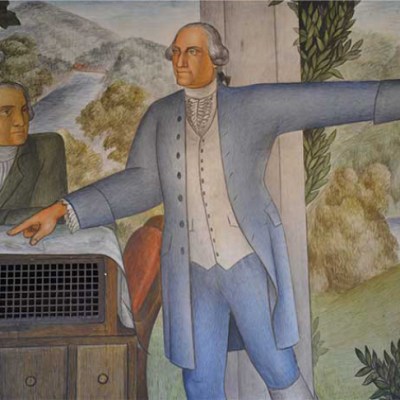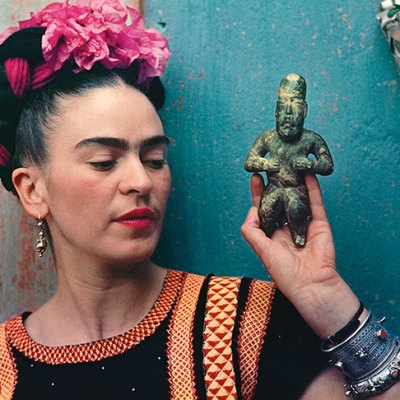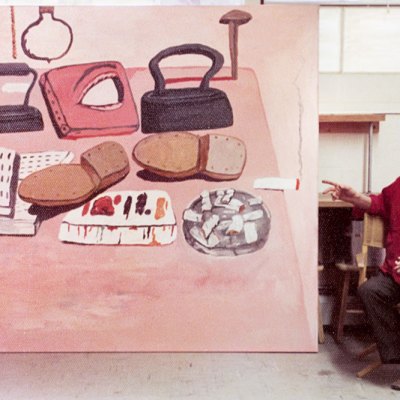‘I never knew that Mexico City was so cosmopolitan!’ ‘I never knew that there was such a close connection between Jackson Pollock and Mexican artists!’ I overheard these and similar remarks during my several visits to ‘Vida Americana’ at the Whitney. Having worked in the field of Mexican art history and examined its cross-border implications for decades, these comments struck me as surprising. Yet I was heartened to hear them in the context of an exhibition that refocuses attention on Mexico as a centre of modernist art in the first half of the 20th century. More than a decade in the making, this invigorating exhibition, curated by Barbara Haskell, retells the story of Mexican art that evolved in non-academic, avant-garde directions after the revolution in 1920 (to a great extent for self-declared nationalist purposes), and re-evaluates the complex history of muralism – that pre-eminent Mexican genre that had a profound impact on many US artists. More significantly, the show refocuses the narrative of North American modernity away from a model that stresses the triumph of Abstract Expressionism towards one that recognises the role of leading Mexican artists such as Diego Rivera, José Clemente Orozco and David Alfaro Siqueiros. The exhibition also sits within the Whitney’s own developing definition of American art; it follows recent shows dedicated to Brazilian artist Hélio Oiticica and Cuban-born Carmen Herrera.
Construction Worker (study for Blueprint for Living, a Federal Art Project mural, Red Hook Community Building, Brooklyn, NY) (1940), Marion Greenwood. Frances Lehman Loeb Art Center, Vassar College, Poughkeepsie. © Heirs of Marion Greenwood

Featuring around 200 works, the exhibition includes key paintings, as well as prints and drawings by Rivera, Orozco and Siqueiros – known as the ‘Three Great Ones’ of Mexican muralism. Emerging out of the idealism of the revolution, mural paintings were commissioned by the country’s post-revolutionary government to unite the war-torn country. Often socially and politically charged, they were meant to be seen by ordinary men and women. The Whitney deals with the question of how to represent a site-specific genre in a number of ways. There are several full-scale photographic reproductions of works by Rivera, including a room dedicated to his Man at the Crossroads (1934), a complex depiction of modern society with an everyman figure at the centre. Originally commissioned for the lobby of the Rockefeller Center, the fresco was destroyed after Rivera refused to remove an image of Lenin; a revised version was then painted for the Palacio de Bellas Artes in Mexico City. Reproductions work well in this show, and in the case of the Rivera, there are two large-scale studies for the mural also included. There is an intriguing video of the murals in the Abelardo L. Rodríguez Market in the Mexican capital, a collaboration in the mid 1930s between 10 Mexican and US artists, including Miguel Tzab Trejo, Pablo O’Higgins, Marion and Grace Greenwood, and Isamu Noguchi.
Man, Controller of the Universe (1934), Diego Rivera. Palacio de Bellas Artes, INBA, Mexico City. © 2020 Banco de México Diego Rivera Frida Kahlo Museums Trust, Mexico, D.F./Artists Rights Society (ARS), New York. Reproduction authorized by El Instituto Nacional de Bellas Artes y Literatura, 2020

Five canvases by Thomas Hart Benton (who deeply admired Rivera’s art but not his politics) for the American Historical Epic (1926–28), as well as a selection of Jacob Lawrence’s small-scale but hugely significant Migration series (1940–41), present another pathway for understanding the impact of on-the-wall narratives. Lawrence is one of many African American artists in this exhibition – which includes Charles White, Elizabeth Catlett, Hale Woodruff, and Aaron Douglas, among others – who were inspired by the muralists and their celebration of marginalised histories. Catlett’s visit to Mexico in 1946, for example, had a profound effect on her: she joined the important print collective Taller de Gráfica Popular and eventually became a Mexican citizen. The presence of these artists in the show, as well as the examination of subjects related to social unrest in the US – caused by Jim Crow laws in the South and virulent racism in the North – by white as well as Asian-American artists, forms a distinctive focus in this story of artistic transmission.
The triad of Pollock-Orozco-Siqueiros is one of the most outstanding connecting threads of the show. Paintings and prints by each of the three artists are presented side by side to make clear the impact it had on Pollock to see Orozco’s mural Prometheus (1930) at Pomona College – he called it ‘the greatest painting done in modern times’ – and to study with Siqueiros at the Experimental Workshop in New York in 1936. As a young artist, Pollock was drawn to the work of these artists rather than that of the more classical Rivera because of the raw emotional power at the heart of their often existential scenes.
Landscape with Steer (c. 1936–37), Jackson Pollock. © The Museum of Modern Art/Licensed by SCALA/Art Resource, NY; © 2019 The Pollock-Krasner Foundation/Artists Rights Society (ARS), New York

The show also draws welcome attention to lesser-known Mexican artists, such as Alfredo Ramos Martínez (Fig. 2) and Rufino Tamayo. An early work by Tamayo, the striking Man and Woman (1926), attests to the interest among emerging artists at this time in indigenous figures and the inclusion of stylistic components derived from popular arts traditions, such as folk art, that were avidly revived in post-revolutionary Mexico. There are two paintings by Frida Kahlo and one by María Izquierdo, although these appear to be token representations by Mexican women artists of whom there are many other significant examples, such as Aurora Reyes, Fanny Rabel and Rina Lazo. The selection of US women painters and printmakers is more extensive and satisfying than that of their Mexican contemporaries.
Calla Lily Vendor (1929), Alfredo Ramos Martínez. © The Alfredo Ramos Martínez Research Project

Sculpture plays a small but important role. Several outstanding pieces by Mardonio Magaña, the foremost modern Mexican sculptor known for his wood carvings, bear witness to how three-dimensional artists reacted to the vogue for indigenist subject matter: Man with Sarape and Sombrero (1935) is an especially arresting example. Films are shown throughout the exhibition. The Russian director Sergei Eisenstein began (the unfinished) ¡Que Viva México! in 1930, a sweeping portrayal of Mexican culture and politics that also reveals the country’s radical appeal for avant-garde artists worldwide. Paul Strand’s film Redes (The Wave) (1936) recounts the story of the rebellion of oppressed fishermen on Mexico’s west coast. Their leaders’ call to arms resounds throughout the galleries as an anthem of revolution – a perfect soundtrack to the exhibition.
At the time of writing, the Whitney, like most other museums worldwide, is closed due to the coronavirus outbreak. Happily, the immense efforts to put this show together can be appreciated in the informative catalogue. I hope that, if the exhibition opens as planned at the McNay Art Museum in San Antonio in late June, this splendid project may please new audiences in a part of the country so close to the Mexico-US border.
For more information on ‘Vida Americana: Mexican Muralists Remake American Art, 1925–1945’ visit the Whitney Museum of American Art’s website.
From the May 2020 issue of Apollo. Preview and subscribe here.



